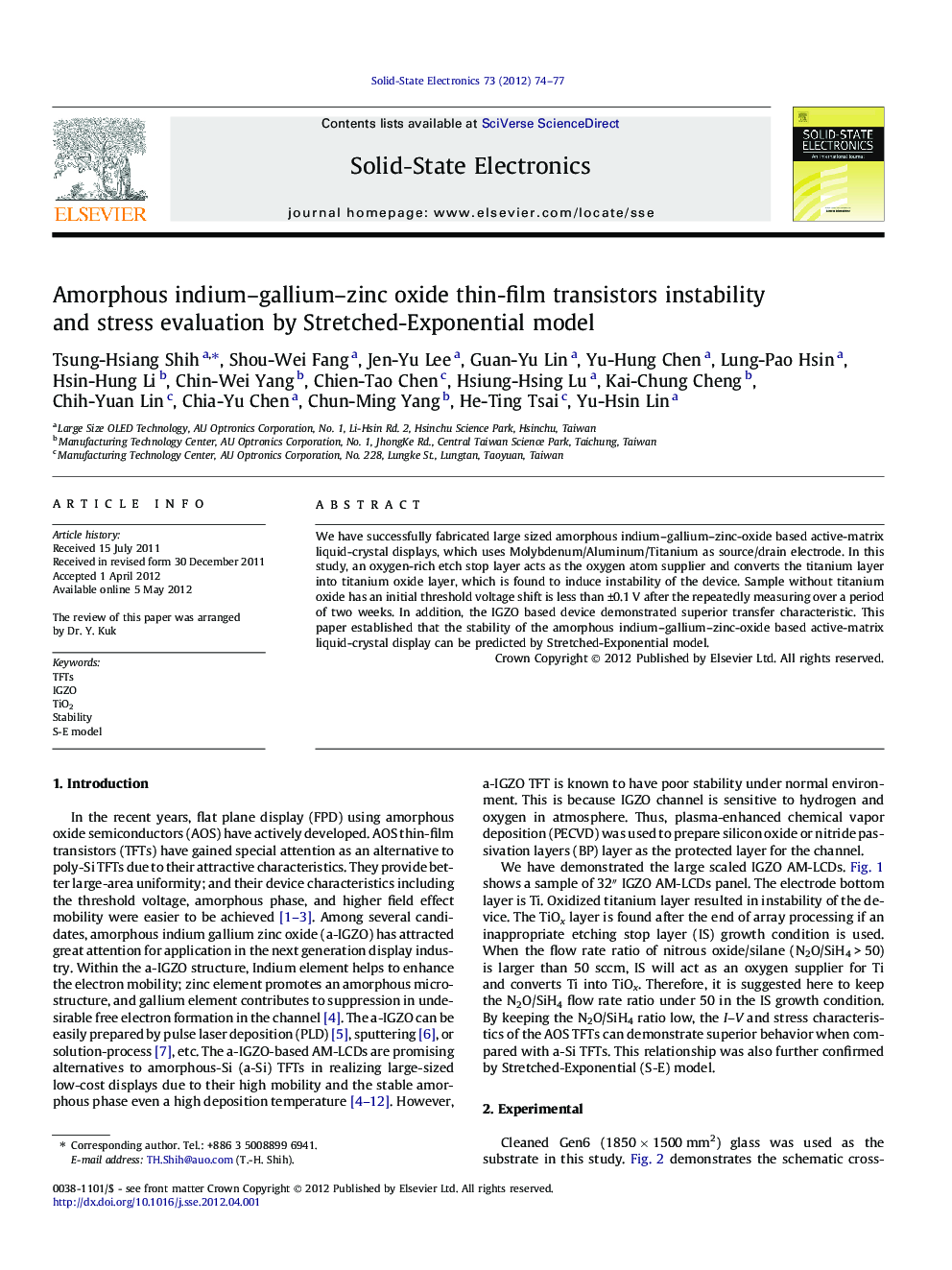| Article ID | Journal | Published Year | Pages | File Type |
|---|---|---|---|---|
| 748669 | Solid-State Electronics | 2012 | 4 Pages |
We have successfully fabricated large sized amorphous indium–gallium–zinc-oxide based active-matrix liquid-crystal displays, which uses Molybdenum/Aluminum/Titanium as source/drain electrode. In this study, an oxygen-rich etch stop layer acts as the oxygen atom supplier and converts the titanium layer into titanium oxide layer, which is found to induce instability of the device. Sample without titanium oxide has an initial threshold voltage shift is less than ±0.1 V after the repeatedly measuring over a period of two weeks. In addition, the IGZO based device demonstrated superior transfer characteristic. This paper established that the stability of the amorphous indium–gallium–zinc-oxide based active-matrix liquid-crystal display can be predicted by Stretched-Exponential model.
► SD bottom TiO2 layer is found on the IS growth condition w/i N2O/SiH4 ratio higher than 50, but not on the ratio of 30. ► By fine tune the IS growth condition (N2O/SiH4 = 25), the IGZO TFTs shows a superior behavior than a-Si TFTs. ► We also double confirm the good stability can be explained by S-E model.
